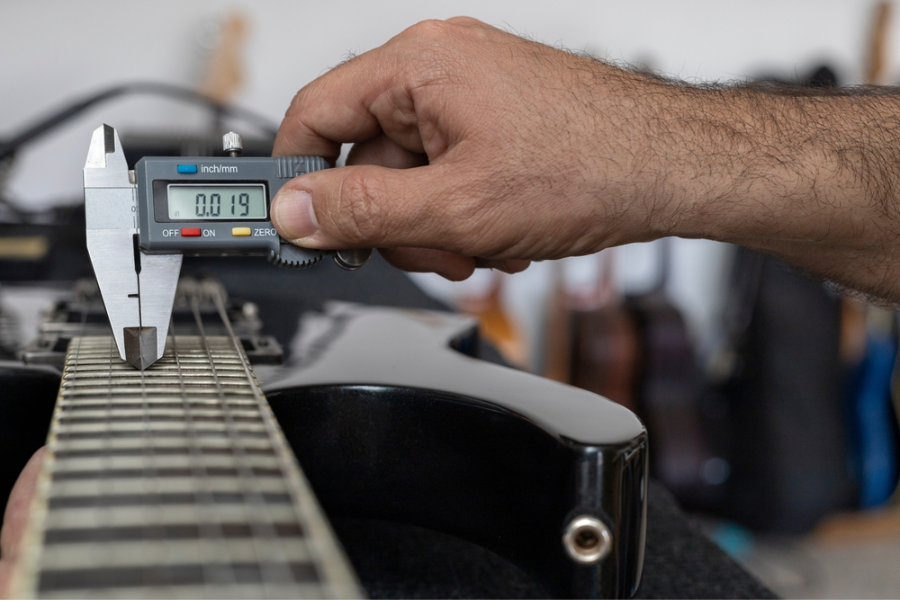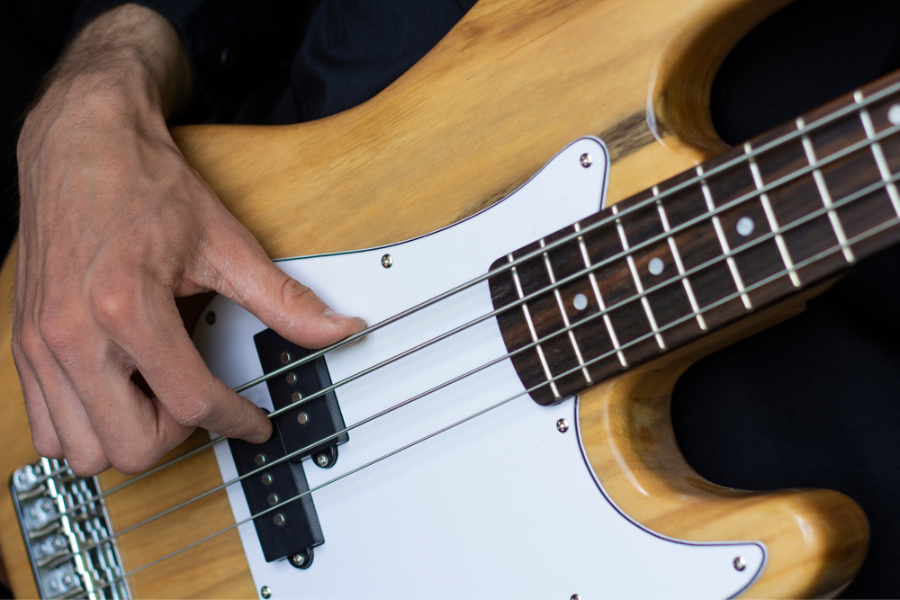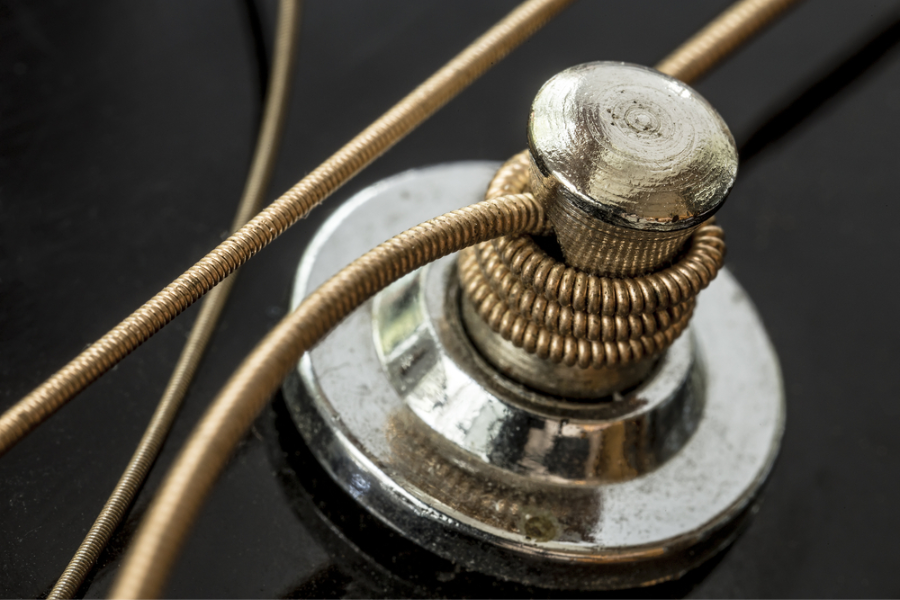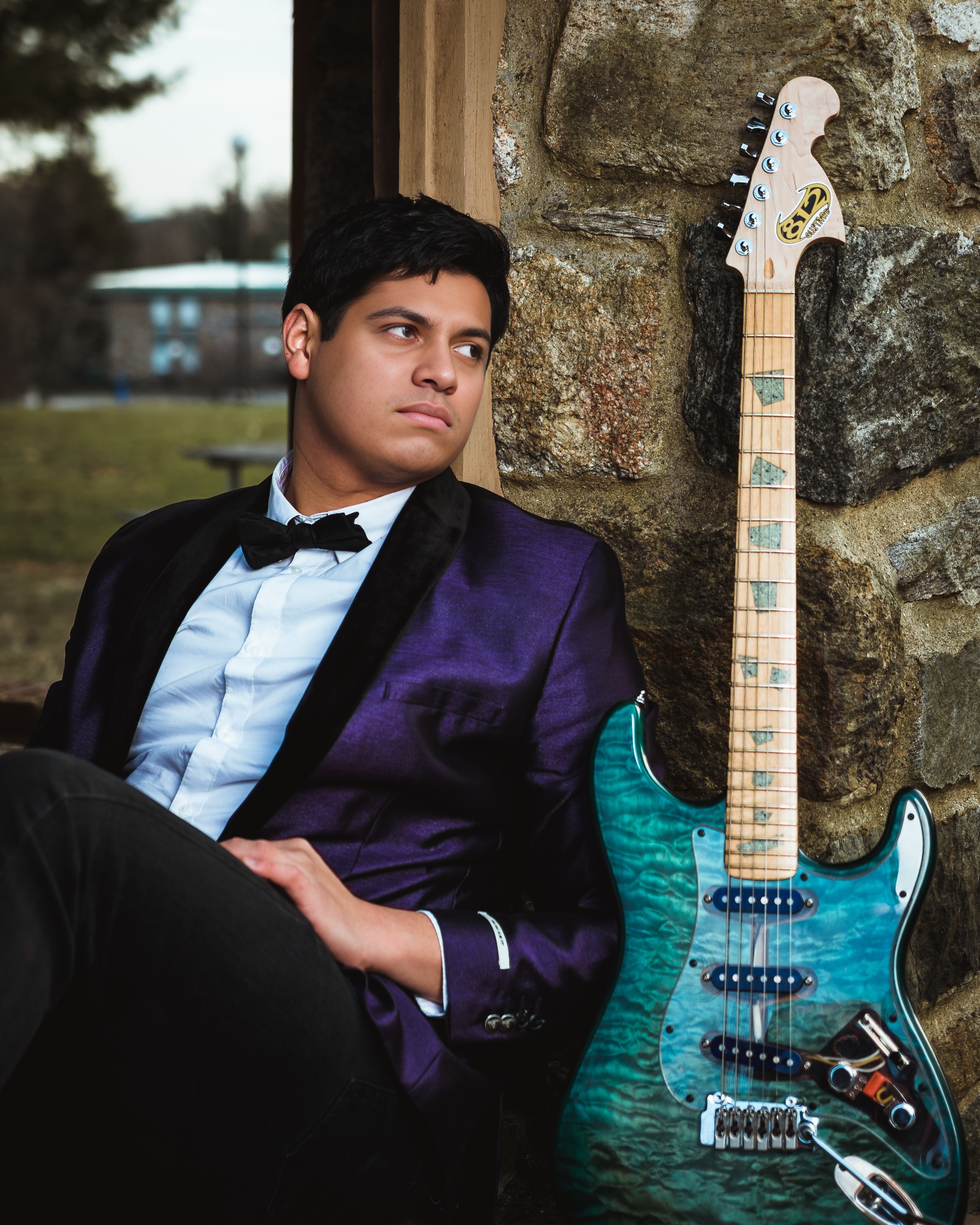Imagine you’re about to hit the stage, but your guitar just doesn’t feel right. If the strings are too delicate, your solos will sound weak, and if they are too sturdy, every chord will be a struggle. It’s a common question in musicians minds: What gauge strings for electric guitar? The most important factor to know when picking a set of strings is the string gauge.
In this article, we’re going to look at all the different sizes of strings you can get for your electric guitar. Eguitarmania will tell you about the good and not-so-good points of both thin and thick strings. Plus, I’ll give some tips on what might work best for different types of guitars.

What Gauge Strings For Electric Guitar?
String gauge is the measurement of a string’s thickness in diameter. It refers to the thickness measured at 1/1000 (0.010) of an inch of the high E string. Standard sets for guitar range from super-light to heavy, telling you the tone and feeling you can expect.
Higher tension is required to achieve a certain pitch with heavier strings. Fret and bend notes require more pressure, but they usually produce a bolder sound. Light strings work in the opposite way.
An electric guitar’s thinnest string, for instance, would typically be a.008mm string because of its very small weight. The thickest string that a six-string electric guitar would typically use is a.056mm string.
What Is The Difference Between String Guage?
Let me share with you the insights I’ve gained on light, medium, and heavy gauge strings and help you find the best choice for your style.
Light Gauge Strings: Are They the Right Choice for You?
Strings with a light gauge, usually between.008 and.038 inches, are considered very playable. Because of their ease of pressing and bending and reduced stress, they are popular among beginners.
Many pop and jazz performers choose to play with lighter-gauge strings. However, they don’t have enough thickness or sustain to play strong riffs or solos.

What Makes Medium Gauge Strings So Great?
Strings with a medium gauge, typically ranging from.009 to.042 inches, are ideal because they are both easy to play and provide a pleasing sound. It is a great tool that can do a lot of different things without hurting your fingertips.
Rock, blues, and country are just a few of the genres that might benefit from their broader thickness. These strings are better for rhythm playing than lighter-gauge strings because they last longer and have more sustain.
Distinctions of Heavy Gauge Strings
Strings with a heavy gauge may be .010 to .052 inches in diameter, or even larger. Ideal for robust chords and solos, the larger strings provide a fuller, more resonant sound with more sustain. As you can see, you’ll need stronger fingers for them.
Hard rock, metal, and blues guitarists always reach for them. Since they keep tension and clarity even when tuned down, heavy strings are fantastic for lower tunings as well.
Comparison between : Thin & Thick Strings
Now that we’ve been through the basics, I wanted to talk about the differences between light and heavy gauge strings to help you decide which will be best for you. Here are the categories I’ll be comparing them in:
Sound and tone
Thin Strings: Produce a brighter, sharper tone. Due to the thin string, it easier to emphasize higher frequencies and create a clear and crisp sound.
Thick Strings: Offer a fuller, warmer tone on the mid and low frequencies. This makes them great for a richer rhythm section and styles that demand a beefier sound.

Accessibility
Thin Strings: are easier to bend and press down. Suitable for players who need a lot of bends and fast fingerwork in their playing.
Thick Strings: are more solid. Making it harder and requiring more pressure to fret and bend. Preferred by rhythm guitarists and those who play more aggressive styles.
Music Style Suitability
Thin Strings: Jazz, pop, and even certain rock styles benefit greatly from thin strings because of the delicate lead work and bending that are required in these styles. If you’re a guitarist who values speed and a stronger tone, these are the strings for you.
Thick Strings: For heavier styles that call for a fuller, more resonant tone, thicker strings are the way to go. This is especially true in hard rock, metal, and blues. Rhythm guitarists that want a fuller, more powerful tone will also love them.
How to Adjust to a New String Gauge?
Here’s what to expect when you’re changing to new strings on your guitar:
Adjusting Guitar Setup for a New Gauge
Neck Truss Rod Adjustment: Different string gauges exert different amounts of tension on the guitar neck. A truss rod adjustment may be necessary to maintain the correct neck curvature. Heavier strings may require tightening the truss rod, while lighter strings might need it loosened.
Intonation Adjustment: Changing string gauges can affect intonation—how in-tune the guitar plays across the fretboard. Adjust the bridge saddles to ensure each string is properly intonated. This is usually done by adjusting the length of the string at the bridge.
Check Pickup Height: Especially for electric guitars, changing string gauges can alter the magnetic pull between the pickups and the strings, affecting tone and output. Adjust the pickup height if necessary to optimize sound quality.
Nut Adjustment: In some cases, especially when significantly changing string gauges, the nut slots may need to be widened or narrowed. This is a delicate task that might require a professional luthier, especially if the slots need widening.

Tips for Transitioning to a Different String Gauge
Start Slow: If you’re moving to a heavier gauge, your fingers will need time to adjust to the increased tension. Begin with light playing and gradually increase your practice intensity.
Finger Strength Exercises: For heavier gauges, consider doing finger exercises to build strength. This can include practicing scales, finger stretching exercises, and grip strengtheners.
Adjust Playing Technique: Heavier strings might require more force when fretting or picking, whereas lighter strings need a lighter touch to avoid excessive buzzing.
Be Patient: It takes time to adjust to the feel and response of new strings. Allow yourself a few days to get accustomed to the changes in playability and tone.

Final Thoughts
So, what’s the takeaway? What matters most when choosing strings is how they feel at your fingertips and how they sound when played. To discover the one that suits you best, don’t be scared to experiment with other sorts. If you want to get the greatest enjoyment out of playing guitar, these are the strings for you.









